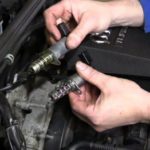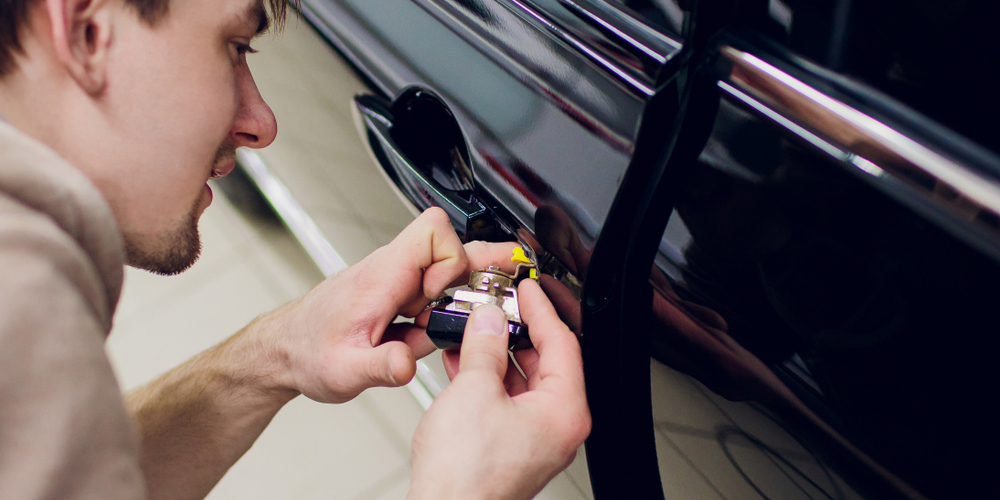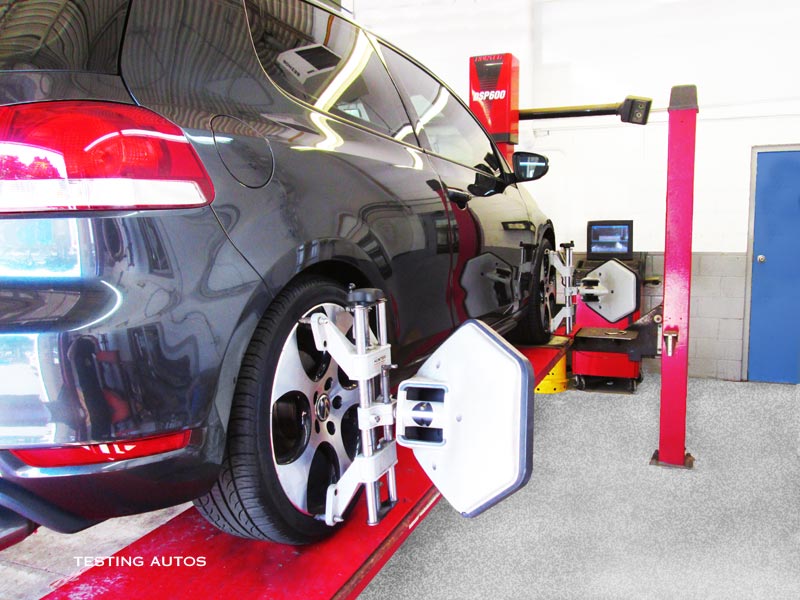 We are going to consider the top 7 signs of bad AC compressor in our article today. Every vehicle’s air conditioning system relies on a constant flow of refrigerant to operate. The air conditioner uses this refrigerant to produce the cool air that comes out of the dashboard vents.
We are going to consider the top 7 signs of bad AC compressor in our article today. Every vehicle’s air conditioning system relies on a constant flow of refrigerant to operate. The air conditioner uses this refrigerant to produce the cool air that comes out of the dashboard vents.
Only a component known as an air conditioner compressor, also known as an AC compressor, can keep this refrigerant moving efficiently. This part provides pressure, which pushes the refrigerant forward and keeps it flowing smoothly. It also warms the refrigerant, which is necessary for the creation of cool cabin air. You should have a consistent flow of cool air coming from the vents as long as the AC compressor is operational. However, just like anything else, an AC compressor might break down.
Before we look at the top 7 signs of bad AC compressor, let’s look at what an AC compressor is and the work it does in a vehicle.
Read also: What Are The Signs Of a Bad Alternator?
What’s an AC Compressor?
The air conditioning compressor is an integral component of the vehicle’s air conditioning system. The heart of an AC system, according to many repairmen, is the compressor. An AC compressor, in simple terms, is a pump that generates heat by putting the air conditioning refrigerant under great pressure. Because both increase the pressure on a fluid and may move it through a pipe, the AC compressor is referred to as a pump. The compressor decreases the volume of a gas because gases are compressible. While some liquids can be compressed, the primary function of a pump is to pressurize and transfer liquids.
The AC compressor has two ports: an input and an output, which are referred to as ‘suction’ and ‘discharge,’ respectively. The suction port is always the hole with the bigger diameter. The refrigerant is’sucked’ into the compressor, compressed, and then ‘discharged’ through the output to the condenser. A complicated system of passages, valves, bearings, and other components can be found inside the compressor.
How Does AC Compressor Work?
The AC system is based on two principles: evaporating liquids absorb heat and condensation from vapor to liquid conveys heat to objects and their surroundings.
The refrigerant is pumped under high pressure and at a high evaporation temperature from the compressor. The refrigerant is pumped in steam to the condenser or the hot rig during this stage. The medium temperature is very high at the condenser, the fan blows through the condenser, the vapor liquid is cooled, and it condenses into a liquid at high pressure and low temperature.
The liquid refrigerant circulates to the filter or desiccator, which purifies the refrigerant by removing all moisture and contaminants. The liquid flow into the evaporator is controlled by the expansion valve (evaporator). It decreases the refrigerant’s pressure. In the evaporator, the liquid turns to vapor due to a drop in pressure.
The refrigerant absorbs heat from the automobile cabin during evaporation. It entails cooling the cabin’s air mass. The evaporator is where outside air is brought in. Because the air from the evaporator absorbs a lot of energy through the radiator leaves, the temperature of the air is quickly lowered. In the meantime, the moisture in the air will condense and become visible. When the liquid medium is at a high temperature on refrigeration platforms, the pressure changes to a vapor liquid with a low temperature and pressure.
The refrigerant requires a lot of energy during this operation, thus it draws energy from the air around the evaporator. The energy does not vanish; instead, it transforms from one form to another. Because the air loses energy, the temperature drops, resulting in chilly air. Under high temperature and low pressure, refrigerant is vaporized and returned to the compressor.
After that, the refrigerant is compressed, condensed into a fluid, and then released under pressure. The refrigerant is significantly hotter at this time than when it was first introduced, but the heat is dispersed by the condenser coils. The refrigerant is cold again by the time it reaches the end of the loop and is fed into the evaporator coils. This cycle will continue as long as the air conditioner is on and the output is hot air rather than cold air.
Let’s now look at the symptoms or signs of Bad AC Compressor.
Signs Of Bad AC Compressor
Strange Sounds: If you turn on your air conditioner and hear a lot of unusual noises, your air conditioner’s compressor is most likely failing.
To turn, the compressor relies on a sealed bearing and a variety of other components. It will be more difficult for the compressor to perform properly if the internal bearings or components become damaged or worn out.
Strange noises are just the start of the problem. As a result, you should treat this symptom as a warning sign that your AC compressor needs to be replaced.
Hot Air From Vents: If you switch on your air conditioner and only get hot air coming out of the vents after a few minutes, your AC compressor is likely failing.
If the refrigerant cannot flow through the air conditioning system due to a faulty compressor, the cool air you desire will not be produced. As a result, you’ll be left with hot air.
This could be a progressive process, with the cool air becoming somewhat warmer at first. After a while, the air will become completely hot, with no coolness at all.
Fluid Leaking: Internal bearings in the AC compressor prevent fluid from leaking while it is pressurizing the refrigerant. Fluid can readily leak through these bearings if they become old or broken. Rather than repairing the bearings, you’ll have to replace them.
It’s critical to address leaking refrigerant as soon as possible, because the most common type (freon) is extremely hazardous to the ozone layer when discharged into the environment and evaporates.
Stuck AC Compressor Clutch
The AC compressor clutch ensures that the compressor only uses engine power when it is required. If the clutch becomes stuck or seizes completely, it will be unable to transfer power from the engine to the compressor correctly. The air conditioner could be trapped in the “on” position (causing premature wear to the air conditioning components) or it could be locked in the “off” position and not work at all.
While the engine is running, look under the hood to see if the compressor clutch is spinning when the air conditioner is turned on (if you’re not sure where the clutch is on your vehicle, see the handbook).
You won’t be able to fix the clutch in most circumstances if it has seized like way. The clutch and, in some cases, the entire compressor would be your only option.
Read also: How To Change The Power Steering Fluid
Cost Of Car AC Compressor Replacement
Because an AC compressor is such an important part of any vehicle, it will be one of the more expensive parts to repair when it fails.
First, examine the belt that links the AC compressor to the motor, as a worn or damaged belt can occasionally create the same symptoms. If a malfunctioning belt is not repaired in a timely manner, the AC compressor will most likely be damaged.
The component can range in price from $650 to $950 or more. The labor charges will most likely range between $150 and $200. This indicates that the overall cost could range from $800 to $1,150. In addition, taxes and fees will be charged to these totals.
Can a Car AC Compressor Be Repaired?
AC compressors can be fixed in some cases. However, replacing the broken compressor with a new one is usually a preferable option. It is not only the most time-efficient approach to the problem, but it also usually results in a superior, more long-lasting repair.
Can I Drive with Bad AC Compressor?
Even if the a/c compressor has failed, it is most likely safe to drive your car. There are a few things to keep in mind, however. It shouldn’t effect belt tension or the function of the other belt-driven equipment as long as the compressor pulley rotates smoothly, without wobble or noise.
How Can I Test My Car AC Compressor?
Turn on the air conditioning. Connect a pressure gauge to the low side of the AC compressor, which is usually found in the engine compartment on the passenger side of the firewall. To test whether the compressor turns on, add about 2 oz. of Freon (if it does, you will hear a loud click followed by a puttering sound).
What Happens If I Don’t Fix My Car AC Compressor?
It’s possible that the unit will overheat if all of the refrigerant spills out. Reduced airflow from vents, heated air from vents, and a unit that runs almost continually are more subtle indicators of ac compressor failure. If the compressor is not repaired, all of this will result in a higher electricity bill.
Hope you enjoyed reading this article on; Top 7 Signs of Bad AC Compressor. Kindly share by using the sharing buttons below so others can also learn










Comment